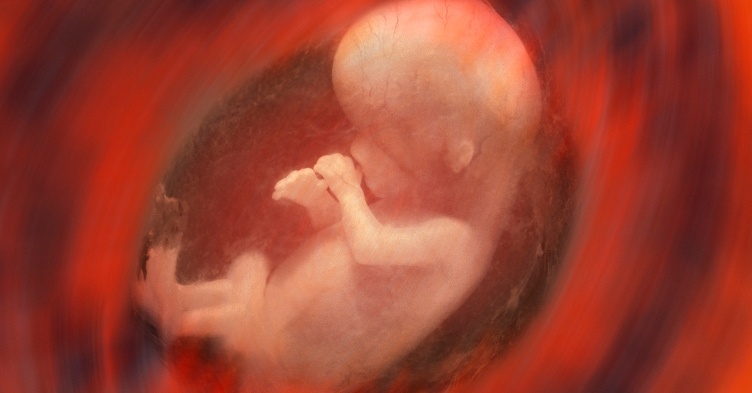Key learning points:
– Recognising signs of postnatal depression
– Acknowledging the risk factors associated with the condition
– Noticing the need to intervene with the mother-baby relationship as well as treat the depression
Postnatal depression (PND) is the most common mental health problem that affects new mothers, but evidence suggests that detection rates are low. This article outlines signs and risk factors for PND. It highlights the wider impact on the family, particularly the baby, and discusses intervention and treatment options both for the mother and the mother-baby relationship.
What is postnatal depression?
PND affects between 15-20% of new mothers1 and is one of the most common mental health problems in the postnatal period. It occurs within the first 12 months after having a baby, and usually develops within six weeks of giving birth. Symptoms can range from mild to severe.
It is common for women to experience ‘baby blues’ that relates to weepiness around two to 10 days postpartum and affects between 60-80% of mothers. However, PND meets diagnostic criteria for clinical depression and does not tend to go away without intervention. Interestingly, there is no specific diagnostic category of PND, but it is considered clinically useful to distinguish depression in the postnatal period for a number of reasons and not least because of the potential effect on the infant and the mother’s ability to care for them.2
Signs and symptoms
Although response to treatment for the condition is generally good, it often goes undiagnosed with up to 50% of cases being undetected in routine clinical practice.3 This happens for a number of reasons, and some changes in mental state and functioning are considered normal in the early stages after giving birth. However, it can also be due to unwillingness to report PND because mothers fear negative consequences for themselves and their baby. The Healthwatch report ‘suffering in silence’found that this is the reason why one third of women surveyed did not disclose their PND. The signs and symptoms of PND within the mother include:
– Persistent low mood.
– Tearfulness for no reason.
– Lack of concentration.
– Feeling irritable or overwhelmed.
– Sleep disturbance and fatigue.
– Loss of interest in activities previously enjoyed.
– Hopelessness.
Distinguishing the symptoms above from normal experience is difficult but it helps to pay particular attention to the persistence and timing of symptoms. For example, fatigue is common in new mothers but women with PND will struggle to sleep even when they are provided with the opportunity, and baby blues will only happen during the first couple of weeks. Further signs that may be present are more specific to family relationships and the mother-baby relationship, these include:
– Hostile or indifferent feelings towards one’s partner.
– Hostile or indifferent feelings towards the baby.
– Anxiety that there is something wrong with the baby regardless of reassurance to the contrary.
– Reluctance to discuss negative thoughts/feelings about the baby.

Who is at risk?
There is no single factor identified as the cause of PND and it is likely to be due to a combination of factors including biological, social and personal history factors. It can affect any new mother regardless of her circumstances and all women should be screened in line with The National Institute for Health and Care Excellence (NICE) guidance. There are a number of risk factors that make it more likely that a woman will experience PND. The most significant being a previous episode of mental health difficulties. At least one third of PND begins in or before pregnancy.4 There is also around a 40% chance of subsequent relapse if a parent has had a previous episode of PND5 and a family history of PND will increase risk.6 Table 1 outlines core risk and predisposing factors that do not predict, but increase, the likelihood of experiencing PND.
Effects on the family
When a woman has mental health difficulties, as well as the adverse effects for her, there is an increased risk of adverse outcomes for their baby throughout life and for their partners.
PND is amenable to treatment but around one third of women who experience it will have ongoing episodes of depression and this figure grows when the high percentage of women who live with undetected and untreated PND are accounted for. Suffering with PND can also place stress upon intimate relationships, and there is evidence to show a moderate correlation between maternal and paternal depression that occurs in the postnatal period.7 This suggests that if a mother is experiencing PND that the father is more likely to be suffering from depression too.
There is a wealth of research evidence that parental “sensitive responsiveness” within the mother-baby relationship is the primary determinant of infant and child development.8 Our increased understanding of brain development further highlights the importance of interactions with primary caregivers in the first few months and years of life. During pregnancy and the first two years of life, brain pathways are laid for life with a staggering 80% of brain development taking place during this time. Babies are born with trillions of nerve cells but if the cells fail to make connections with each other they die and are never replaced. In order to establish these connections babies need repeated, good quality and sensitive responses from caregivers. It is these connections that establish the pathways laid for life. Therefore, this period provides a critical time for optimal or non-optimal development to take place. Postnatal depression is associated with impairments in the mother baby relationship,9 particularly in terms of the quality and frequency of responsiveness and stimulation.
Having a parent with a mental health problem confers risk to a child’s development in every domain9 even after the mental health problem has remitted10 or been treated.11 Children of mothers with anxiety and depression in the postnatal period are 50% more likely to have developmental delay.12 Furthermore, a child’s development score at just 22 months can serve as an accurate predictor of educational outcomes at age 26.13
In this context, it is not surprising that national drivers such as The Healthy Child Programme (HCP) are increasingly focusing services upon early identification and intervention in parental mental health and child development. The National Health Visiting Core Service Specification has an increased and consistent focus on promoting sensitive parenting and assessing and monitoring maternal mental health. The need for perinatal mental health and early intervention services are highlighted in documents such as Early intervention: the next steps.13
What helps?
Perhaps the most important step is ensuring increased detection rates for PND. Supporting healthcare professionals to develop skills and feel more confident in communicating with parents about emotional distress has been found to do this.14 In terms of treating depression, increasing community and social support for mothers is a highly effective low intensity intervention through:
– Signposting to local support networks (eg, Sure Start).
– Meeting others, for example attending mother and baby groups.
– Getting some help looking after the baby/managing the demands of the household.
– Engaging in exercise and increasing activity outside the home.
– Learning relaxation skills.
– Normalising the adjustment to motherhood.
In terms of therapeutic support, the healthy child programme (HCP) Rapid Review15 has found that psychosocial and psychological interventions during pregnancy and the postnatal period designed to prevent PND are effective and include intensive home visiting and facilitated self-help programmes. Where depression is moderate to severe, high intensity cognitive behavioural therapy (CBT) and a combination of CBT and antidepressant medication has been found to be effective. NICE guidelines advocate a series of guiding principles for prescribing antidepressants in the postnatal period to women who are breastfeeding, which include increased monitoring.
Evidence-based interventions to improve maternal mood do not have an impact on the mother-baby/child relationship, which will need intervention in its own right. The focus of such interventions should be on improving sensitive responsiveness. Low intensity interventions can include:
– Supporting the mother in getting to know her baby.
– Information on baby states; the alert phase being the optimal time for interaction.
– Supporting the mother’s interaction and play skills with her baby.
The HCP Rapid Review has found group based parenting programmes to be effective in improving sensitive responsiveness. At a more targeted level, video feedback methods such as video interaction guidance are advocated to improve mother baby/child relationships. The parent infant interaction observation scale (PIIOS) is an effective screening tool for identifying relationships at risk16 and the level of intervention they require. It also highlights that interventions to improve sensitive responsiveness should be delivered by skilled professionals who have received evidence based and accredited training.
Conclusion
PND is the most prevalent mental health problem to affect new mothers and the impact extends to the whole family with potentially life long effects for the child. Although it can be difficult to distinguish from normal adjustment to motherhood, there are indicators within the mother and mother-baby relationship that help to identify PND. Although anyone can suffer with PND there are some core factors that increase risk. The evidence base suggests that treatment for PND can be effective but it is also important to provide intervention for the mother-baby relationship.
References
1. Brockington IF. Motherhood and Mental Health. Oxford: Oxford University Press; 1996.
2. NICE. Antenatal and Postnatal Mental Health: Clinical Management and Service Guidance. National Clinical Guideline Number 192. London. NICE 2014.
3. Hewitt C, et al. Methods to identify PND in primary care. Health Technology Assessment2009;36:1-145.
4. Wisner KL et al. Onset timing, thoughts of self-harm and diagnoses in postpartum women with screen-positive depression findings. JAMA Psychiatry2013;70:490-8.
5. Goodman JH. Postpartum depression beyond the early postpartum period. Journal of Obstetric, Gynaecologic and Neonatal Nursing2004; 33:410-20.
6. Craig MC. Should psychiatrists be prescribing oestrogen therapy to their female patients? British Journal of Psychiatry2013;202:9-13.
7. Paulson JF, Bazemore SD. Prenatal and postpartum depression in fathers and its association with maternal depression. Journal of the American Medical Association2010;303:1961-9.
8. Sroufe LA. Attachment and Development. A prospective longitudinal study from birth to adulthood. Attachment and Human Development 2005;7:349-367.
9. Murray L et al. Controlled trial of the short and long term effect of psychological treatment of post -partum depression. Impact on the mother-child relationship and child outcome. British Journal of Psychiatry2003;182:420-7.
10. Weinberg MK, Tronick EZ. Emotional characteristics of infants associated with maternal depression and anxiety. Pediatrics1998;102:1298-1304.
11. Cooper P, Murray L. Effects of postnatal depression on infant development. Archives of Disease in Childhood1997;77(2):99-101.
12. Deave T et al. Transition to parenthood: the needs of parents in pregnancy and early childhood. BMC Pregnancy and Childbirth2008;8:30.
13. Allen G. Early Intervention: The next steps. Department for Work and Pensions and Cabinet Office; 2011a.
14. Goldberg DP, Jenkins L, Millar T, Faragher EB. The ability of trainee GPs to identify psychological distress among their patients. Psychological Medicine1993:23;185-93.
15. Public Health England. Healthy child programme: rapid review to update evidence. gov.uk/government/publications/healthy-child-programme-rapid-review-to-update-evidence (accessed 6 January 2016).
16. Svanberg PO et al The PIIOS: reliability and validity of a screening tool. Journal of Reproductive and Infant Psychology2013;31:5-14.







